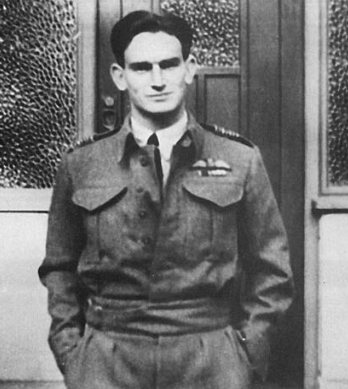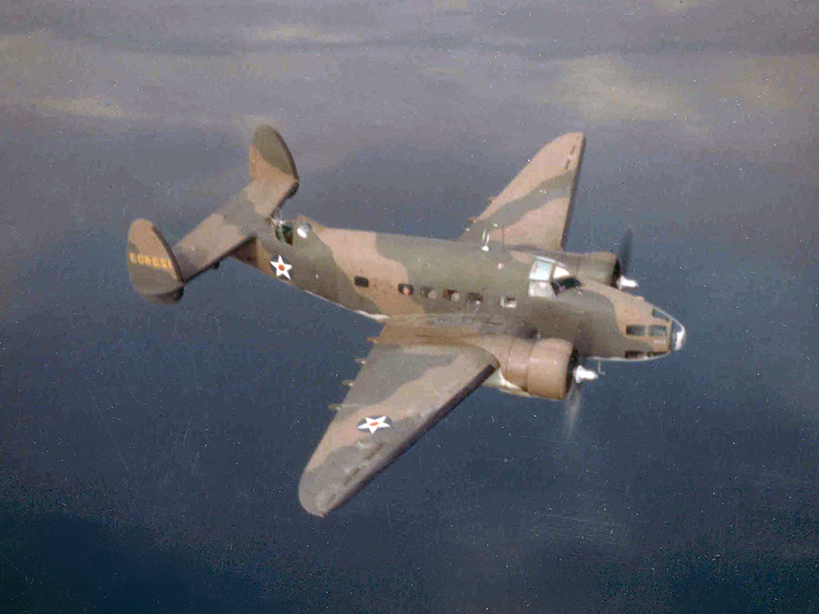Burton, Howard Frizelle
- Date of birth:
- June 21st, 1916 (Letchworth/Hampshire, Great Britain)
- Date of death:
- June 3rd, 1943
- Mentioned on:
- Air Forces Memorial Runnymede
- Service number:
- 33227
- Nationality:
- British (1801-present, Kingdom)
Biography
Howard was known throughout his RAF career as ‘Billy’ and was born on Wednesday 21 June 1916 at Letchworth, Hertfordshire, the youngest son of Louis and Edith Burton, nee Frizelle. He was educated at Bedford School, an independent boarding school in the county town of Bedford. Following this in 1934, Howard applied for a King’s Cadetship to the Royal Air Force College, Cranwell. His application was successful, and Howard was admitted to RAF Cranwell as a Cadet in 1935.
Whilst there, on 7 October 1936, Howard was involved in a fatal flying accident. He and another pilot, Flight Lieutenant Roy Bartlett were flying Hawker Fury aircraft carrying out camera practice when their planes collided. Howard baled out and survived though injured. Flight Lieutenant Bartlett was killed in the accident.
Notwithstanding this incident, Howard was an excellent student and passed out of RAF Cranwell at the end of 1936 having been awarded the Sword of Honour for the most outstanding Cadet. On graduation, Howard was posted as Pilot Officer to No 46 Squadron at RAF Kenley, Surrey, on 18 January 1937. At that time, the Squadron flew Gloster Gauntlet aircraft. This was a single seat biplane fighter and the last RAF fighter to have an open cockpit. Howard was promoted to Flying Officer in June 1938 and in February the following year, the Squadron was re-equipped with the Mk 1 Hawker Hurricane.
On 26 June 1939, Howard was posted to RAF HQ 12 Group. This was a command organization which controlled a number of squadrons in an air defence role. Howard’s stay there was not long. Four days after the outbreak of war, Howard was posted to No 66 Squadron as Commander of B Flight.
No 66 Squadron was initially based at Duxford and moved shortly after Howard’s arrival to RAF Coltishall, Norfolk. Flying Spitfires, in early 1940 the squadron was involved in providing cover for bombers attacking targets in occupied Holland and were then involved in offensive patrols covering the evacuation from Dunkirk.
In June 1940, Howard married Jean Feredith Maxwell Robertson at Leatherhead, Surrey. A 21 years old Secretary, Jean was the daughter of Air Commodore Edmund Digby Maxwell and Evelyn Jane Robertson. Jean’s elder brother, Duncan Maxwell Robertson was a BBC employee before the war and enlisted as Flying Officer Air Gunner (Service No 70570). He was killed on 28 October 1940 when the aircraft he was in stalled whilst making a sharp turn as it climbed away from a target during a live firing exercise in Lincolnshire. He is buried at Manby (St Mary’s) Churchyard, Lincolnshire.
On 3 September 1940, Howard was appointed Acting Squadron Leader and was posted to 616 Squadron, initially based at Kirton-in-Lindsay, Lincolnshire, before moving to RAF Tangmere, West Sussex, as the Battle of Britain intensified.
RAF Tangmere housed three Squadrons of Spitfires, 145, 610 and 616, all part of HQ No 11 Group commanded by Wing Commander Douglas Bader DSO, DFC. Bader and his superior, Air Vice Marshal Trafford Leigh-Mallory favoured what were called ‘Big Wing’ tactics. This involved the three squadrons working in unison against German formations. From records it appears that Wing Commander Bader favoured flying with Howard’s 616 Squadron. He was a notoriously aggressive fighter pilot, pushing himself exceptionally hard and expecting everyone else to adhere to the same standards. He also had an abrasive personality and frequently clashed with those higher in rank and his own colleagues. Before he was shot down and captured in August 1941, it was reported that the Squadrons under his command were on the verge of mutiny over his leadership style.
Howard’s rank of Acting Squadron Leader was made substantive on 1 September 1941. On 19 September 1941, Howard was awarded the Distinguished Flying Cross.
On 29 September 1941, Howard was posted to HQ No 11 Group as Squadron Leader-Tactics. Later that year he was posted to RAF Hawkinge, near Folkestone, Kent. This was the home to several Squadrons although there is no definitive role mentioned for him.
On 11 April 1942, Howard was posted to RAF HQ Middle East and in October of that year was appointed Squadron Leader HQ No 212 Group based at Benghazi, Libya. He only remained there a month before transferring to No 243 Group also at Benghazi, flying Hurricanes against the Afrika Corps troops of the then General Erwin Rommel. In December of that year, he transferred again to No 243 Group, flying Curtiss Kittyhawks. This was a fighter-bomber regarded as a ‘tankbuster’ and Howard achieved much success against Afrika Corps armoured columns, despite the fact that the RAF formations were outnumbered three to one by German and Italian squadrons.
On 13 February 1943, Howard was promoted Acting Wing Commander and ten days later was awarded a Bar to his DFC. In April 1943, Howard was again decorated, this time with the Distinguished Service Order.
His return flight to North Africa met with disaster. The Lockheed Hudson in which he and several other high ranking officers was flying, including Osgood Hanbury was intercepted over the Bay of Biscay by a Ju 88. It was shot down with no survivors.
Howard Burton is remembered on the Runnymede Memorial, Panel 118.
Promotions:
January 1935: Acting Pilot Officer (probation)
December 19th, 1936: Pilot Officer
June 19th, 1938: Flying Officer
June 19th, 1940: Flight Lieutenant
September 1st, 1941: Squadron Leader (Temporary)
Do you have more information about this person? Inform us!
- Period:
- Second World War (1939-1945)
- Rank:
- Acting Squadron Leader
- Unit:
- No. 616 (South Yorkshire) Squadron, Royal Air Force
- Awarded on:
- September 19th, 1941
"This officer has led his squadron with commendable skill and coolness. He has participated in fifty-four sorties over enemy territory during which he has assisted in the destruction of two Messerschmitt 109's, probably destroyed a Heinkel in and damaged a further two enemy aircraft.
Squadron Leader Burton has on all occasions proved an inspiration to his unit."
- Period:
- Second World War (1939-1945)
- Rank:
- Acting Wing Commander
- Awarded on:
- February 23rd, 1943
"Since he assumed command of the wing in December, 1942, this officer has taken part in nearly all its sorties. On one occasion, the formation was attacked by a very large force of enemy fighters, 1 of which Wing Commander Burton shot down. He has displayed great keenness and devotion to duty."
Second DFC awarded as a bar for on the ribbon of the first DFC.
- Period:
- Second World War (1939-1945)
- Rank:
- Wing Commander
- Awarded on:
- April 6th, 1943
"Wing Commander Burton is the commanding officer of an exceptionally successful wing. Recently, he has taken part in several sorties involving low level attacks on heavy armoured fighting vehicles. His brilliant leadership has contributed in a large measure to the great success achieved."
- Period:
- Second World War (1939-1945)
Sources
- Photo 1: Frizelle Family
- - Jonathan Frizelle
- The London Gazette Issue 35279 published on the 19 September 1941
- Second Supplement to The London Gazette Issue 35914 published on the 19 February 1943
- Second Supplement to The London Gazette Issue 35966 published on the 2 April 1943
- Commonwelath War Graves Commission
- 616 Squadron







